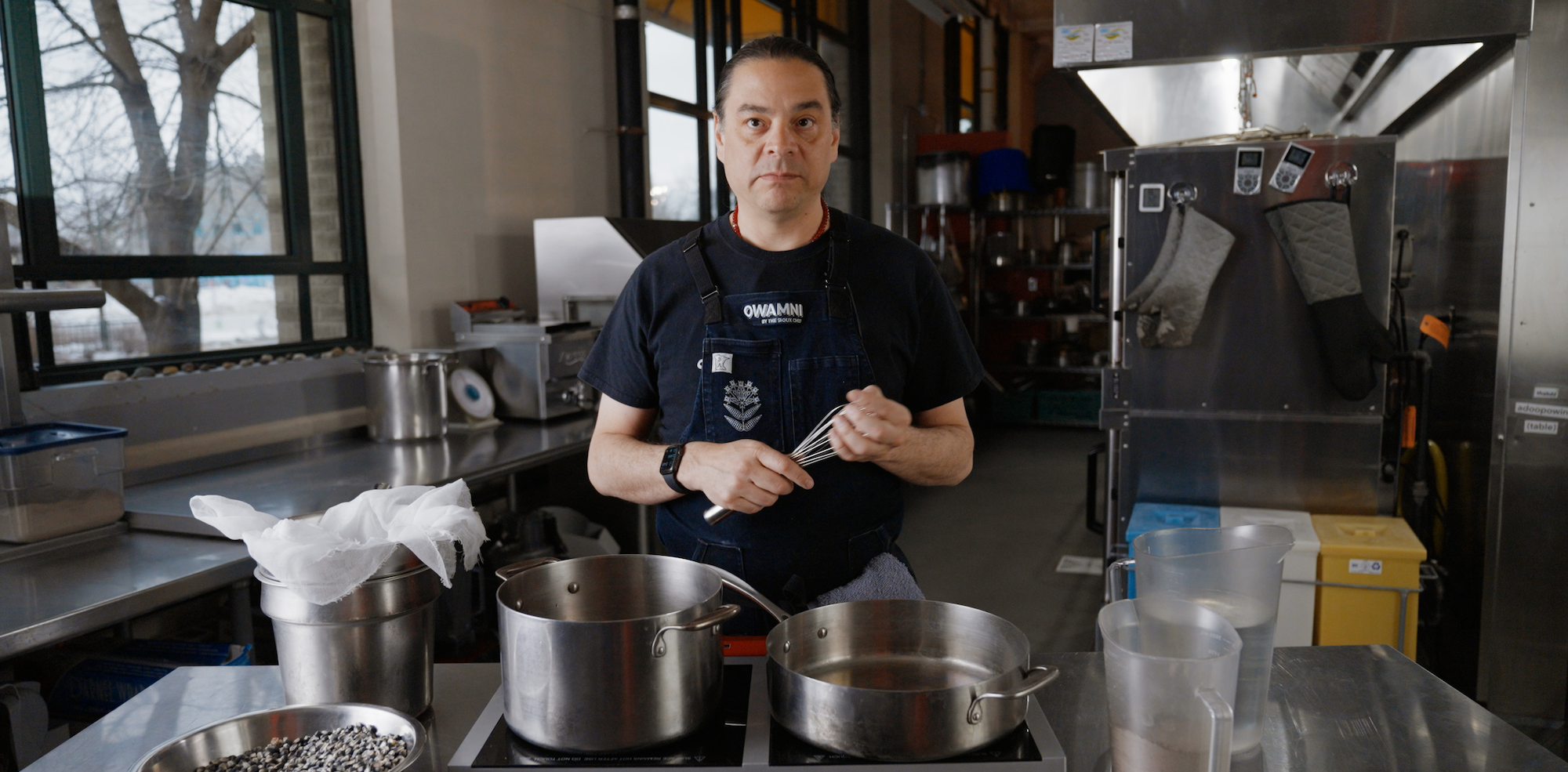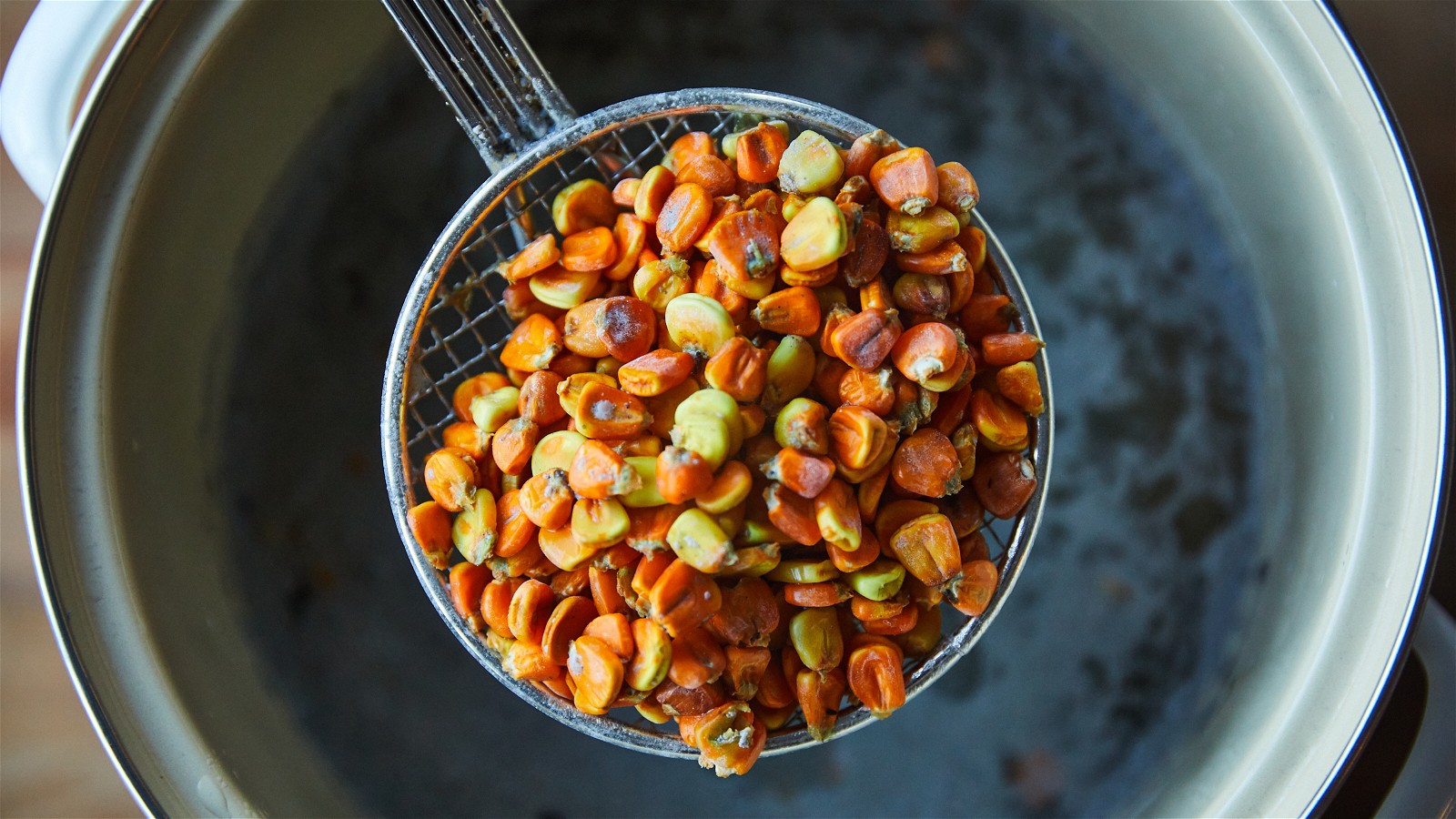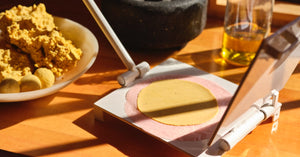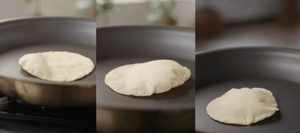Sean Sherman, The Sioux Chef, Makes Nixtamal with Wood Ash
Sean Sherman, The Sioux Chef, Makes Nixtamal with Wood Ash

July 27, 2022
"The flavor of the finished nixtamal and masa has a distinctly smoky, campfire essence, which I find especially complements roasted vegetables and grilled fish, though any pairing works, really. There’s also something rustic, elemental, and primordial to me about this method that I find quite romantic."
How is nixtamalizing corn with wood ash different than nixtamalizing with cal?
"Clocking in at a pH of about 11.3, wood ash is more than ten times less caustic than cal, which is approximately 12.4 pH. The pH scale is logarithmic, which means that a difference of one integer value (e.g., 12 to 11) changes the concentration by a factor of 10. This means that it takes a bit more ash to get the job done than cal.
For this reason, we’ll use a ratio of 1 part ash to 1 part corn, by volume. For example, one cup of corn will require one cup of ash to get the job done. (By weight, this ratio works out to be about 1 part ash to 2 parts corn, depending on the size and density of the corn kernels used.)
Where to find ash for nixtamalizing corn:
"Because ash has common applications beyond nixtamalization, including soap making and as a soil amendment, it is easy to find sifted wood ash online, if you don’t happen to have any on hand. Alternatively, you can hit up your nearest wood-fired restaurant for some, as it’s usually thrown out at the end of an evening’s service. (Special thanks to chef Juan and Max at Gjelina restaurant for Masienda’s local ash hookup.)"
For more on masa and nixtamalization, shop the MASA book.




All Comments
Great question! If by ‘over-nixtamalize’ you mean the corn taking on a stronger basic/alkaline smell, that can definitely happen when the pH gets a little high — usually from using a bit too much cal. A good starting point is around 1% cal relative to the weight of your corn.
If you’re noticing more alkaline notes than you’d like, try reducing the cal slightly next time to bring the flavor back into balance. That said, if your cornbread and grits are still turning out delicious, you’re really close — just a small tweak should get you right where you want to be.
In terms of flavor profile, is it possible to over-nixtimalize my corn? It pretty quickly smelled like the best corn bread in the world, but then transitioned to having a mkre basic, alkaline smell. I’ve made some corn bread and grits that still taste amazing, but I just wasn’t sure if I need to tweak my process.
Hi Bill! Great question, and we’re glad to hear you gave it a try! A good starting point is to use equal parts corn and ash by volume, then add three parts water for every one part ash. From there, you can adjust based on your results, but this ratio should give you a solid foundation for proper nixtamalization. Let us know how round two goes!
I used this process successfully—although not without some raised eyebrows from my wife. I’m looking to repeat this process but it looks like there is one crucial measurement missing—the amount of corn. I’m sure there’s a limit to how much corn that the product of a 3:1 ratio of water/wood ash can nixtamalize.
Hi Trish! Yes, the ratio of lye to dried corn is 1 part ash to 1 part corn by volume. Let us know if you have any additional questions!